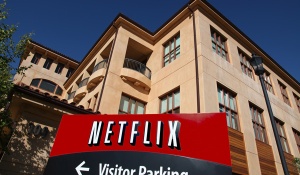Category: Social Media
Content aggregators? Definitely foes!
I went to our Executive Forum keynote, where Dan Roth, head of LinkedIn’s content strategy, talked about the ways publishers can work with LinkedIn to grow their audiences and gain exposure among business professionals. His keynote was titled, “LinkedIn: Friend AND Foe?”
I was curious going into the session, hoping to hear what LinkedIn is planning next. I thought it was exciting to think that LinkedIn was branching out from networking and job hunting to content, especially since Roth’s background is as a great writer – Roth got his start reporting at Forbes and Wired, and then became managing editor at Fortune.com.
But the takeaways I got from his keynote evoked current trends that actually devalue the work he himself used to do. Here’s my take on what he said:
• As business media evolves, the conversations about the events of the day are as valuable as the primary reporting of the events. “The reader sees himself as equal in authority to the author of the article,” Roth said. LinkedIn is hoping to leverage more reader-generated content as LinkedIn users engage in conversations about, say, articles from content publishing companies. Note that LinkedIn members contribute this valuable content for free.
• LinkedIn is soliciting engaging essays from “influencers” and “thought leaders,” big names like Jack Welch, Richard Branson, Bill Gates and T. Boone Pickens. All of whom contribute their words for free. Oh, sorry, I mean for exposure and metrics around who is reading their insights. But these influencers see value in it.
• LinkedIn also loves it when publishers use their “InShare” buttons to send metrics about readers back to LinkedIn, and where LinkedIn users are having conversations … in LinkedIn groups and in their content feeds that they share with other users. Again, LinkedIn does not pay publishers for any of this.
• LinkedIn is launching a new feature, now in beta, where publishers can give LinkedIn their full RSS feed, as much content as they want, to run on publisher LinkedIn pages. Publishers can also accessorize these pages with photos, graphics, and other content. In exchange for letting publishers put their content on LinkedIn, publishers get detailed metrics on who is viewing, using, and talking about the publishers’ content. No money changes hands, of course. And due to privacy considerations, odds are LinkedIn will not share the actual profiles of readers. So no lead gen opportunities there.
So what are the great content initiatives at LinkedIn? Get important people to contribute content for free. Get users to comment and converse on this content for free. And get publishers to contribute content for free. Use this content to bring users to LinkedIn every day.
Continue reading
What LinkedIn means for b-to-b marketing — and publishers
In a post on TheGuardian.com, writer David Benady endorses LinkedIn as the “first port of call” platform for business-to-business marketers. He writes that b-to-b marketers overlooking the social network could be missing a huge opportunity. While it’s clear that LinkedIn is becoming a major game changer in publishing content for professionals, the platform has also silently built up other offerings for b-to-b marketers, including advertisements and lead generation, the same services trade publishers today offer their clients.
“There are a lot of tactical things that we do for marketers: brand awareness, lead generation, consideration,” said Jonathan Lister, vice president of marketing solutions at LinkedIn, in the eMarketer report, “Marketing on LinkedIn.” “The marketers who find the most success with LinkedIn are the ones who understand that we can help them engage with members all through the business lifecycle and touch them at all points of their decision journey.”
At an upcoming ABM event, LinkedIn executive Dan Roth will talk about how the company serves vertical markets — and where it wants to partner, rather than compete, with publishers. Here’s an overview of LinkedIn’s services, and how they may affect publishers.
ABM research: 74% of B2B media users are decision makers
ABM’s newly released Value of B-to-B report details many ways in which business publishers connect buyers and sellers. Most plainly, of 6,682 business professionals polled, 74 percent say that they are involved in purchasing decisions or supplier selections. 22 percent said that they are not involved in those decisions, and 4 percent did not answer the question.
Sponsored by Adobe Systems Inc. and created in partnership with three marketer organizations, eight trade publishers and a research firm, the Value of B-to-B report also polled marketers and publishers for a full 360-degree look at the ways buyers and sellers interact through b-to-b media. The 2 MB PDF download, including 30 pages of analysis and over 350 pages of raw data, is now available at the ABM website.
So of the 4,968 business media users who say that they make buying decisions, what b-to-b resources do they use when researching work-related purchasing decisions or supplier selections?

These decision makers are using trade websites, magazines, events and other print and digital media to research their purchases.
To download the full report and to see a video presentation of the results, with more analysis and research from the Value of B-to-B research, click here.
By Michael Moran Alterio
Tweet, re-tweet or retreat?
by Mark Sableman, ABM’s Information Policy Counsel
Everything about Twitter invites you to re-tweet and to broadly republish the content you find there. In journalistic terms, using Twitter material may seem like reporting the news, using tweets and their attachments as basic raw newsworthy information. Anything in a tweet was intended for the wide world, so news media ought to be able to use it, too — right?
Not quite. A recent court decision has imposed a reality check on the myth of freedom to reuse tweets and their attachments.
Daniel Morel, a freelance photographer, took photos of the Haitian earthquake, and made them available on Twitter. Agence France-Press (AFP) took the photos off Twitter, and distributed them on its wire service. AFP customers published the photos.
When Morel complained, AFP asserted that Twitter’s legal terms allowed it to use the photos, but the court ruled to the contrary. Twitter’s legal terms and conditions were hardly crystal clear, but they pointed out that users retain whatever rights they own to the content they post. That is, Morel, as photographer and copyright owner, retained his rights. Other Twitter terms, referring to Twitter’s rights to use such material, might have confused AFP, but they gave no license to third parties like AFP to reprint copyrighted content.
Continue reading
The legal minefield of social media marketing
 Last week, Netflix was hit with the news that a Facebook update might cause the company to face legal action from the Securities and Exchange Commission. In July, CEO Reed Hastings updated his Facebook page, in a public post, touting that Netflix subscribers streamed one billion hours of content in June, a company milestone, and congratulating his team. That post, says the SEC, might violate the Regulation Fair Disclosure rule, which requires information to be disclosed to publicly to investors at the same time. According to the Chicago Tribune, the SEC’s case will fall down to whether that milestone was substantive to investors and, if so, whether investors knew Hastings planned to disclose important company news on his Facebook page. If the SEC finds Netflix violated the rule, the company can face civil action.
Last week, Netflix was hit with the news that a Facebook update might cause the company to face legal action from the Securities and Exchange Commission. In July, CEO Reed Hastings updated his Facebook page, in a public post, touting that Netflix subscribers streamed one billion hours of content in June, a company milestone, and congratulating his team. That post, says the SEC, might violate the Regulation Fair Disclosure rule, which requires information to be disclosed to publicly to investors at the same time. According to the Chicago Tribune, the SEC’s case will fall down to whether that milestone was substantive to investors and, if so, whether investors knew Hastings planned to disclose important company news on his Facebook page. If the SEC finds Netflix violated the rule, the company can face civil action.
Increasingly brands expect social media to be part of any media company’s offerings. According to the 2012 Social Media Marketing Industry Report, 94 percent of businesses with a marketing department use social media as part of their marketing efforts. There are plenty of benefits — exposure, lead generation, establishing customer loyalty — but this recent case shows there are some pitfalls as well, and legal ones at that. Here are four other legal cases involving social media, and tactics you can take to avoid legal trouble.